Basement Underpinning and Lowering Contractors Toronto
or Call Us:  416-524-2766
416-524-2766
BASEMENT UNDERPINNING
CONTRACTORS TORONTO
Did you know that your cramped basement or crawl space can be transformed into a functional living area? This can be achieved through basement underpinning—a process that lowers the floor and strengthens the foundation to create more livable space. Many Toronto homeowners choose underpinning when they want to add height and stability to an unfinished basement.
Lowering a basement increases ceiling height, boosts load capacity for additional stories, and addresses common foundation problems like cracked basement walls or leaky basements. Proper drainage pipes, new footings, and weeping tiles are often installed during the project to enhance waterproofing.
The basement underpinning cost varies depending on factors like square footage, existing footings, and soil conditions. Our underpinning team uses common methods like bench footing and linear foot extensions to ensure stability. A structural engineer supervises the entire process, ensuring utmost precision. Budget Reno offers a fully insured service, making it a cheaper alternative to moving when adding space to your home.
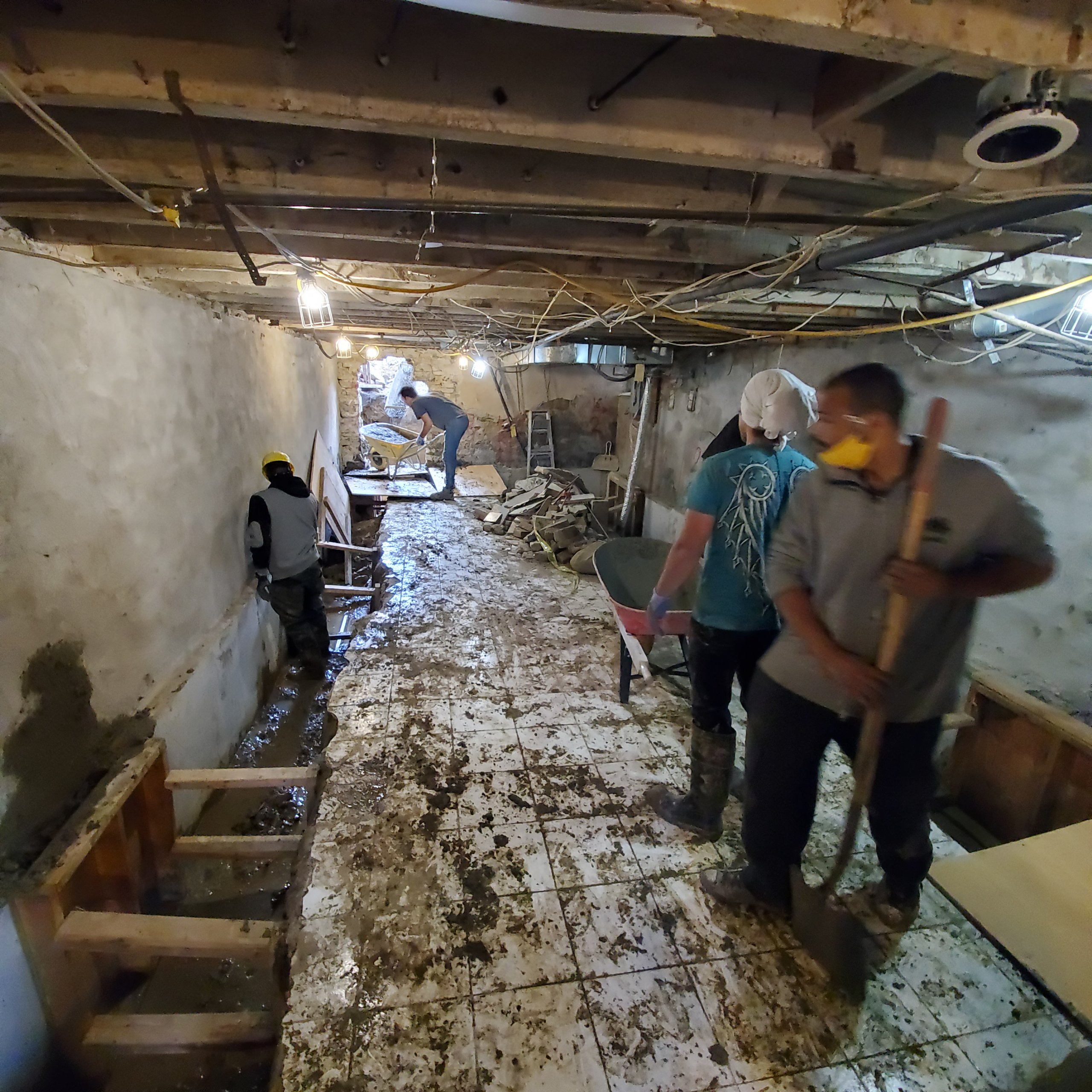
Basement Underpinning
Toronto
Underpinning your basement is one of the most effective ways to add usable space, increase ceiling height, and future-proof your home. In Toronto, many older houses were originally built with low basement ceilings and foundations that no longer meet today’s safety or structural standards. This often leaves homeowners with dark, damp, and cramped spaces that are underutilized. That’s where basement underpinning Toronto comes in. By carefully lowering the basement floor, reinforcing the foundation, and upgrading the structure, underpinning allows you to completely reimagine the space beneath your home.
With basement underpinning Toronto, you can turn an unfinished basement into a bright and fully usable living space. Whether it’s a rental suite, home office, gym, or extra room for your family, underpinning gives you the flexibility to use your basement as you need. Along with more space, basement underpinning Toronto also increases safety, stability, and property value—making it one of the smartest investments for homeowners in Toronto.
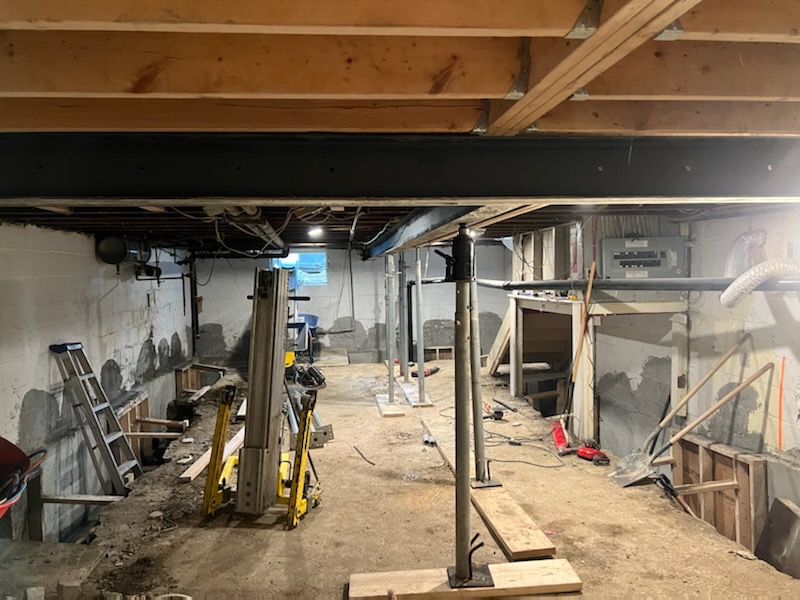
What Is Basement
Underpinning in Toronto?
Basement underpinning in Toronto is a specialized construction process that lowers
your basement floor and strengthens your foundation to create additional living space.
This popular home renovation technique increases ceiling height from the typical 6-7
feet to a comfortable 8-9 feet, transforming cramped basements into functional living
areas.
Why Choose Basement Underpinning in Toronto?
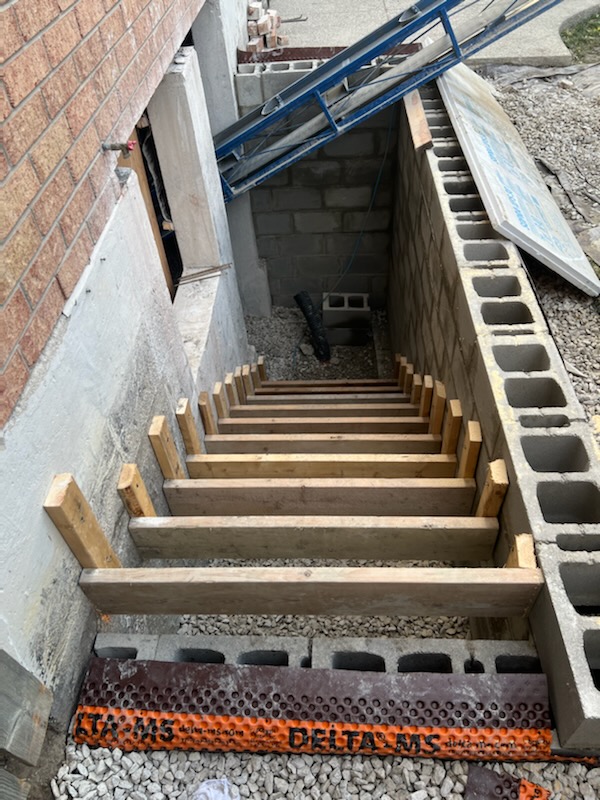
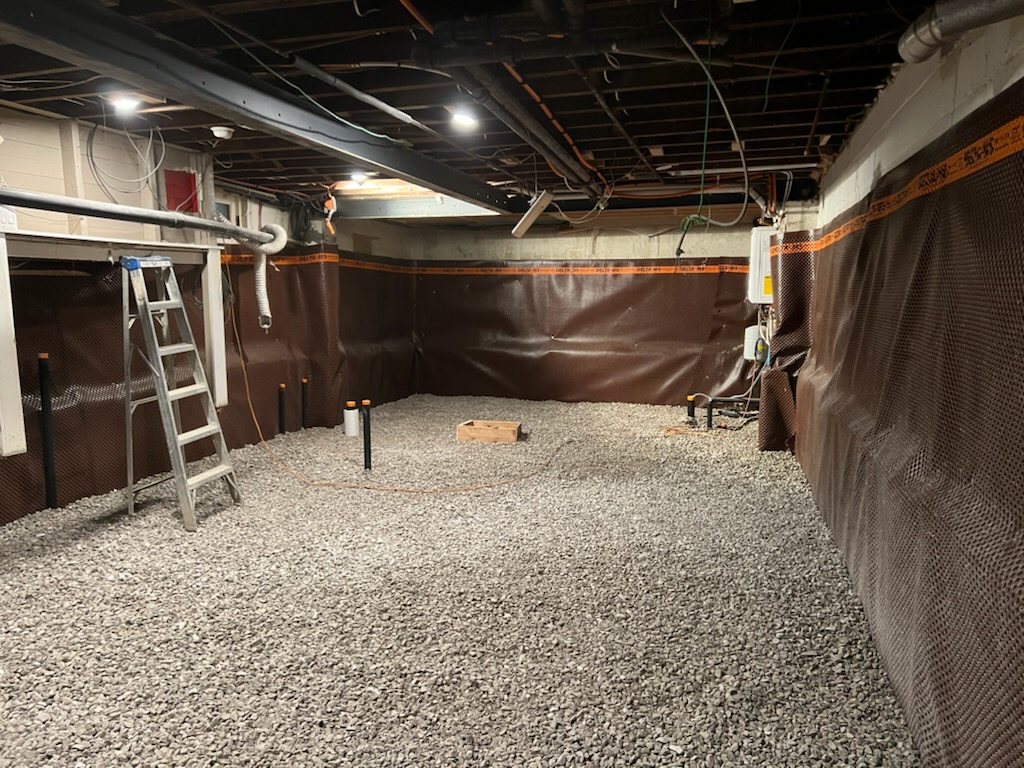

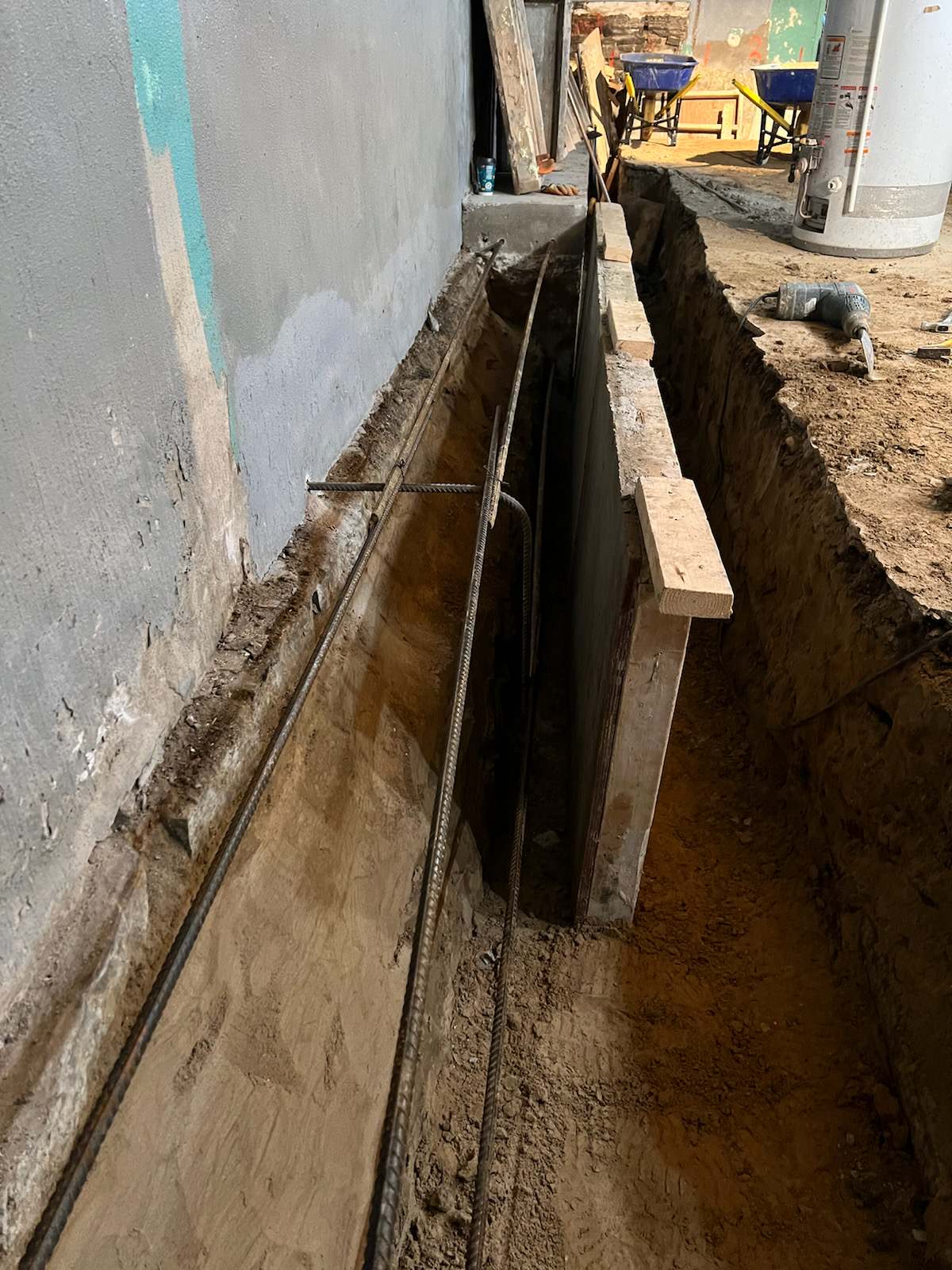



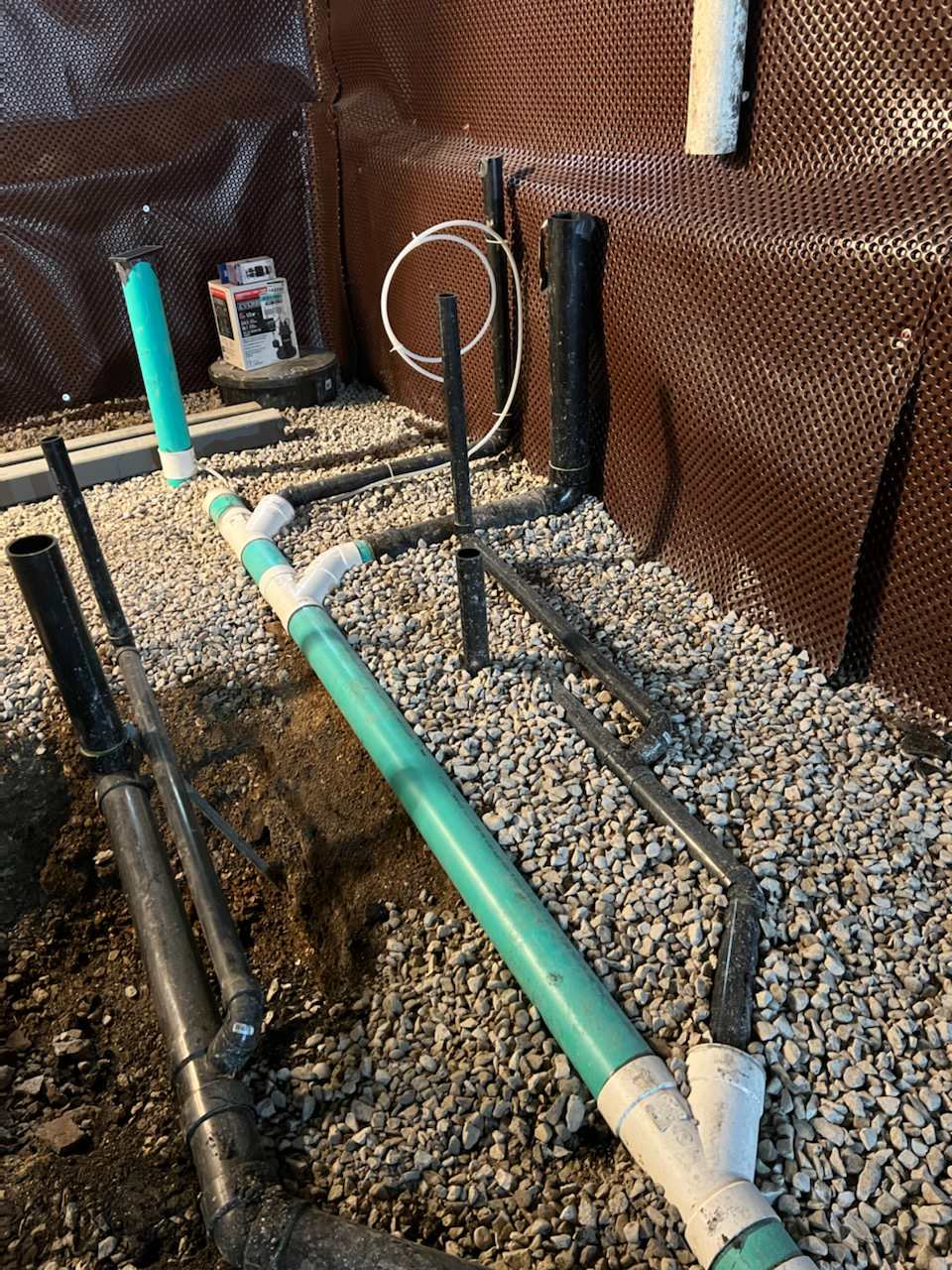
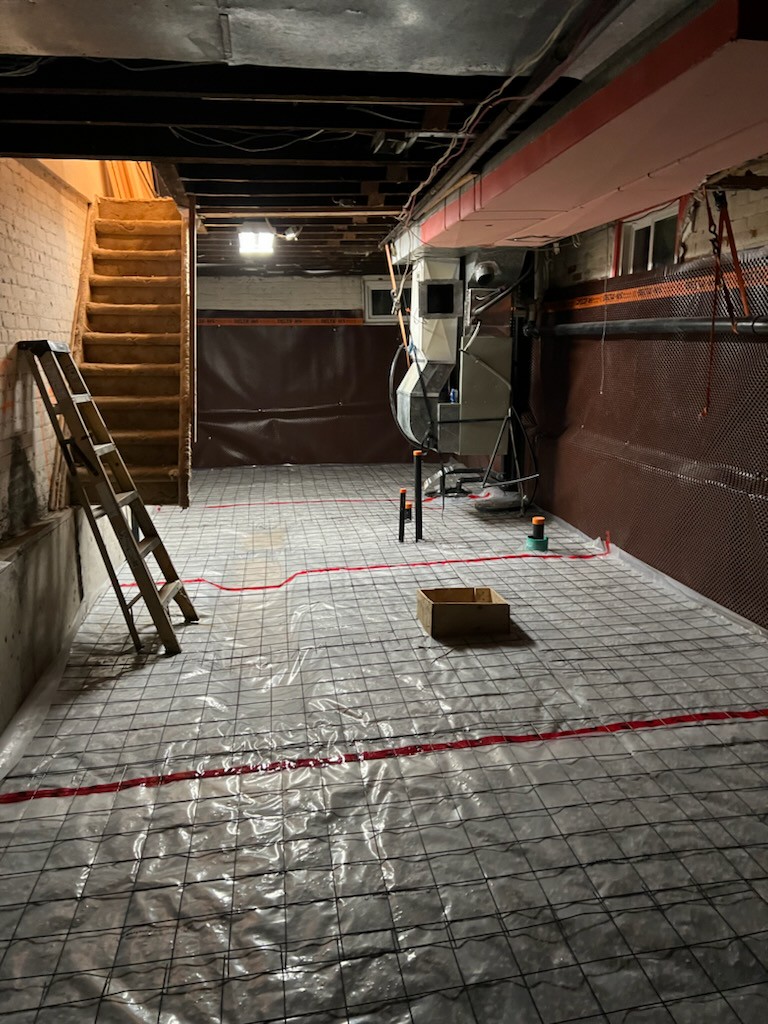
Why Choose Us?
Budget Reno is one of the best home renovation company in Toronto, we have the expertise and resources to help you achieve all your home improvement goals. We’re experts in basement underpinning, concrete floor replacement, excavation, foundation walls, and footings. Consult with our team of highly-trained professionals to receive a careful evaluation of your foundation, surrounding area, excavation depth, electrical re-routing, plumbing, concrete work, and building code requirements.
Basement Underpinning Toronto Process
The process of basement underpinning is intricate and requires specialized skills. It involves more than just excavating the basement floor for added ceiling height. Incorrect excavation can jeopardize the structural integrity of the basement foundation and entire house. Professionals dig under the foundation and reinforce it with concrete to support the additional weight. For basement underpinning in Toronto, a structural engineer evaluates the soil underneath and ensures compliance with local building codes.
Our team starts by assessing the basement wall, weeping tile, and drainage pipes. We address all underpinning basement requirements, including plumbing, basement waterproofing, and other fittings. Proper planning helps control the basement underpinning cost, which varies per square foot. The conclusion underpinning process must ensure stability and long-term safety.

DEMOLITION WORK
01
The majority of homes in Toronto have underutilized basements. This is often because the basements have low ceilings and feel cramped. As a result, most homeowners only use their basements as storage areas for the things they rarely use. Underpinning helps transform a basement into an extra usable space. The underpinning process usually starts with the removal of all items from the basement, followed by the demolition of the existing floors, walls and other finishes. The purpose of demolition is to make it easy for the contractors to have a clear and open work environment required to start the basement lowering process. When the basement is clear, planning will be easier.

REMOVING CONCRETE FLOOR
02
The transformation of the basement begins with the removal of
the existing concrete floors. Needless to say, it is not easy to
remove concrete floors. One of the hardest parts of a basement
underpinning process is getting rid of the heavy concrete
floors. Work starts by first identifying the location of the
utilities.
If the concrete floors are more than 4 inches thick,
power tools may be required. The same goes for reinforced
floors. To determine how much work will be needed, the
contractor starts by breaking off an edge piece or expanding an
existing crack. This helps determine how thick the floors are
and the type of reinforcements used.

SOIL EXCAVATION
03
Once the concrete slab is broken, the heavy demolition is over. The next step will be removing the concrete slabs from the basement. When the area is clear, work begins on removing soil. Basement underpinning is all about increasing the height of your basement. This involves a lot of excavation work. Soil is excavated in order to increase the height of the basement. The dirt is removed from the basement using several methods. The contractor may choose to use conveyor belts or wheel barrels out of the basement. The selected method will depend on the access that your basement allows. The contractor will handle soil disposal for you.

UNDERPINNING SECTIONS
04
After acquiring proper engineering and city-approved drawings, the existing basement will now be divided into vertical sections. These sections are marked as 1, 2, 3, 4 over and over again. The numbers signify where the same numbered sections will have to be excavated. It is the underpinning teeth or sections that make up the structural integrity of the underpinning. A contractor will pick a number. For example, they can pick the number 2. All the sections that have been marked 2 will be cut and excavated. The sections are then formed, and new concrete is poured into the lowered height. The contractor will then pick another number and repeat the process until the entire space is covered.

INSPECTIONS
05
When not done properly, basement lowering has the potential of
compromising the integrity of your home. That is why regular
inspections have to be done at various stages to ensure the
weight-bearing columns or walls are not compromised.
Throughout
the structural excavation stages, a licensed engineer or city
inspector has to sign off on the work done. This helps ensure
that the basement lowering scope is done as per the local
building codes. Our team works closely with a licensed engineer
who inspects every stage of the underpinning process.
Inspections not only guarantee that the project is up to code
but also ensures that we are heading in the right direction
towards meeting your approved basement designs.

DRAINS
06
Unsurprisingly, basements are more likely to take on water than any other room in your home. The last thing you want is for your magnificent basement renovation to be ruined within a few months by water damage. That is why the next step in basement underpinning is the installation of drainage systems. We will discuss with you the available options and help you understand the pros and cons of each option. New drains will then be installed, connected and inspected before any work continues. Our team will also perform pressure tests to ensure all the plumbing connections are correct and there are no leaks.

WATERPROOFING AND GRAVEL
07
Located below the ground surface, water leaks from the outside
are not the only issues you have to worry about in a basement.
Water may also seep up from the ground and cause damage. That is
why proper waterproofing is so important.
Once the basement has
been dug properly and the new foundation has been set, the next
step in eliminating future drainage or water leakage problems is
waterproofing. Our professionals will install a waterproofing
delta foundation before layering gravel on top of the soil. This
is the best set up by the best underpinning contractors, Budget
Reno. We ensure that you never have to deal with water leak
problems once the project is done.

INSULATION AND RADIANT FLOOR HEATING
08
Located underground, the basement receives little heat from the sun. The floors are cold, and it can be a tad expensive to heat up a basement. That is why you should consider improving your basement even further during underpinning. One of the best things you can do is to install radiant floor heating. Installing underfloor heating will ensure that your concrete floors are never icy cold. The underfloor heating system will further radiate heat to the rest of the room. It will also solve the issue of dampness on the floors. If you are not sure about installing radiant flooring, we can advise on the pros and cons of this system. Our team will also help you pick the best insulation for your basement.

SUMP PIT AND SUMP PUMP
09
At least once a year, cities experience massive rainfalls. In some cases, these heavy rains overload the outdated city drainage infrastructure. As a result of this, flooding becomes prevalent. Massive rains are the main cause of basement flooding. What you may already know is that there are city incentives and rebates that are paid to you if you had a licensed contractor install a sump pump system together with a sump pit. Installing a sump pit and sump pump is undoubtedly the best upgrade you can make to your basement after an underpinning project. Our experts will help with the installation of a sump pit and pump before we pour the concrete floor slab.

POURING BASEMENT CONCRETE SLAB
10
Prior to pouring the concrete, all the sewer and electrical
lines have to be in place. This is because these lines will be
embedded in the concrete. Below the concrete lies a pile of
gravel that is covered by a waterproofing sheet that keeps
moisture from getting to the concrete slab. Once the concrete is
poured, a screed board is used to smooth out imperfections.
Jitterbug tools are used to bring any water, sand and cement to
the surface. This is done to ensure the concrete has a surface
that is smooth and durable.
The basement underpinning is almost
complete when the concrete pad is poured. All that is left is
finishing touches and cleanup.
SCHEDULE A CONSULTATION
Use your online calendar to book an appointment. We meet to discuss your requirements and will provide a renovation solution that fits your budget.
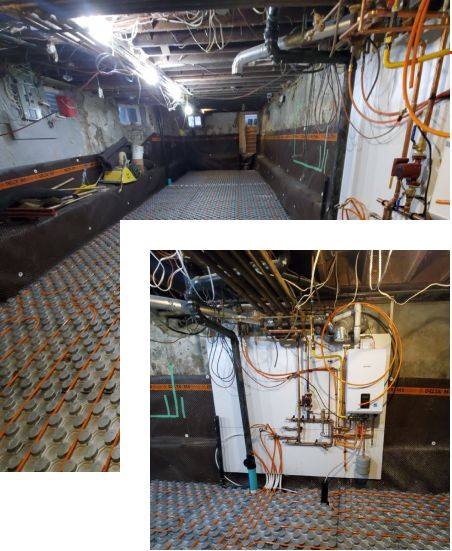
HOW BASEMENT UNDERPINNING WORKS & WHY IT’S IMPORTANT
Moving from one place to another is becoming difficult for many people as the price of houses keeps soaring. You can make things easier and better by considering basement underpinning as a home renovation option to get an extra room for accommodation or something else. There are several steps involved in basement underpinning. It is important that you know these steps so that you are at ease once the project starts.
Many homes are built with 8-foot deep foundations. When the basement is left unfinished, you will have a suitable amount of headroom. However, once the ceilings and floors are installed, the 8 feet shrink quickly, leading to a claustrophobic space. If mechanical systems have to be accommodated, the space will be even smaller. Since the aboveground structure cannot be raised without investing a considerable amount of money, the alternative is basement lowering.
Lowering the basement floor is the most practical way of creating additional space in a home. The work must, however, be done by a professional. That is where our team at Budget Reno excels. We have completed many basement underpinning projects, and we will be able to bring your vision to life and within your set budget. Get in touch with us today for a free consultation.
Why you should do basement
underpinning?
Basement lowering is one of the numerous options homeowners consider a way of adding more living space in their homes. There are three key reasons why basement underpinning is important:
Helps create an extra living space
Basement underpinning solves the issue of having a basement that feels cramped. As a result, you can transform the basement space into any room you want. You can turn the space into a home gym, bedroom, playroom or anything you desire.
Boost your house’s value
Renovating your basement will significantly boost your house’s equity. When underpinning, you will end up doing a lot of repairs, renovations and upgrading the old systems. Moreover, turning an abandoned basement into an extra, usable room makes your home more valuable. This is because buyers are more interested in renovated basements as opposed to an abandoned basement space.
Second source of income
Renting out your basement means you will have a secondary source of income at your disposal. The money can be used to pay taxes, finance a vacation or save up for a project you have been working on. The second source of income will be more valuable if you are still paying monthly mortgage installments. You can use the extra income to reduce the mortgage burden.
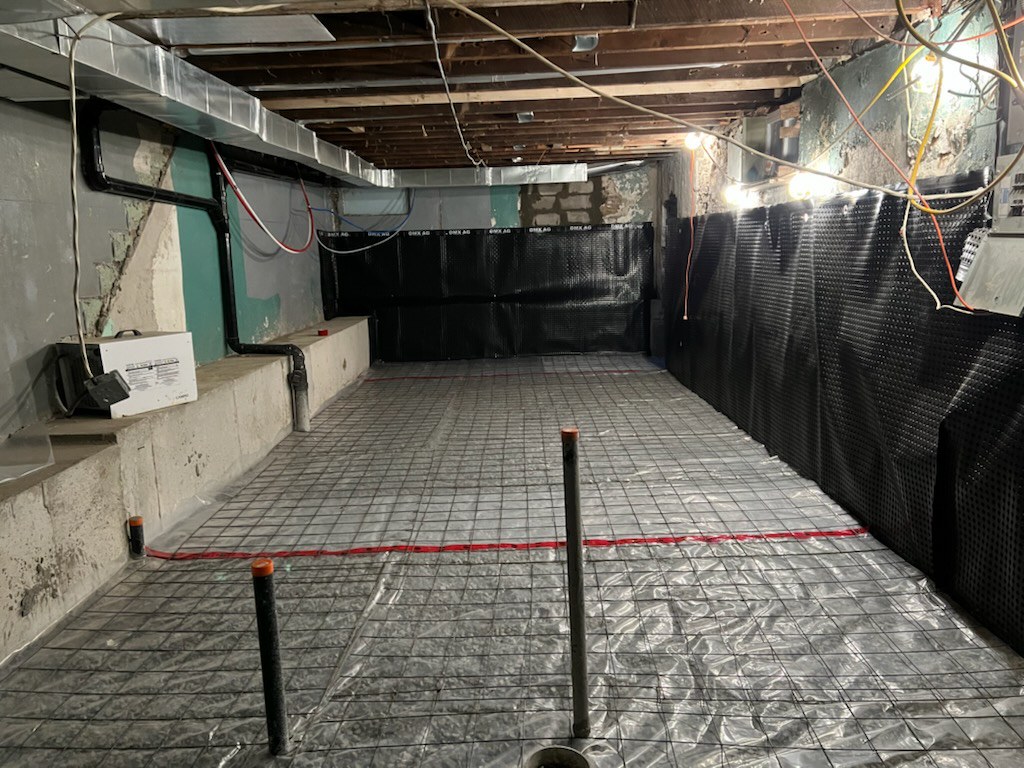
Benefits of doing basement underpinning in Toronto
01.Improve the structural soundness of your home
The first step in lowering a basement is removing the items in it, breaking the concrete floor and demolishing other non-weight bearing structures. Leaving the structure bare will help you know if your home’s foundations had been improperly constructed or if it has been damaged in any way by extreme climate changes, repairs or has any sign of wear and tear. Prior to pouring the concrete to cover things up, your contractor will first take care of any structural issue that your home might have. Underpinning thus provides you with structural soundness and the assurance that your family and possessions are not in an unsafe home.
02.Increase the ceiling height and enhance the lighting
Basement underpinning will increase the head-room in your basement. The contractor will remove the concrete floors, excavate the soil beneath then install waterproofing, gravel and concrete floors. The lowered floors result in a higher ceiling; therefore, the basement space will no longer feel cramped. The increased headroom makes it easy for you to create additional rooms. You can renovate your basement into a home office, home gym, bedroom, playroom or anything you want. Underpinning may also make it possible for you to add larger windows and doors, which will, in turn, increase the amount of natural light that gets into the basement. If installing larger windows is not an option, you can improve lighting by adding better lighting fixtures in the high ceilings.
03.Update old plumbing and electrical lines and improve insulation
Basement underpinning involves the removal of the concrete floors and excavating the ground beneath them. The pipes, power lines and systems that are buried beneath the floors will have to be removed. The lines that run through the walls can also be inspected and a decision made on whether to retain or update them. When covering the lowered basement, you will have the perfect opportunity to improve or update the outdated plumbing and wiring. It will also be a perfect time for you to install new insulation or install new systems that you need such as a sump pit and a sump pump. Modern electrical fixtures can then be added.
04.Boost the value of your property
Homeowners are more interested in more living space. That is why more home buyers are more interested in homes with a finished and underpinned basement. The reason for this is because having a finished basement means the homeowner will have a usable basement space and will not have to spend money and time underpinning an unfinished basement. Moreover, underpinning a basement helps improve the structural integrity of a home. Home buyers want the assurance that the property they are thinking about buying has structural integrity. Even if you don’t plan on creating an extra space in the basement for your family, when it is finished and underpinned, you can transform it into a rental unit that generates income. Simply put, a finished basement offers a great return on investment.
05.Bottom line
All things considered, underpinning your basement is less expensive and a much less disruptive method of increasing your living space. It is cheaper to perform basement underpinning than it is to add an addition to your home by either increasing the footprint or adding a level. The cost of underpinning the basement is lower, and the solution further improves the structural integrity of the house. Needless to say, the cost of improving structural integrity is much lower than the cost of handling extensive repairs in the near future due to structural problems. Moreover, you don’t need high-end materials when finishing your basement. Hardwood, which is an expensive flooring material, is a terrible choice for a basement because of the high moisture issues. You can use less expensive flooring materials that fare well in a basement environment.
FREQUENTLY ASKED QUESTIONS
Q1. How long does it take to underpin your basement?
It depends on the basement's current height and project scope. Most are lowered by 2–2.5 feet to reach 8 feet total height. Once permits are approved, it typically takes about 35 days.
Factors like basement size, concrete thickness, and accessibility may extend the timeline.
Q2. What's a typical cost breakdown for basement underpinning?
Structural engineering: $300–$800. Soil analysis: $500–$2,000. Foundation crack repair: $400–$800. Basement floor replacement: $200–$400.
Anchor bolt reinforcement: $1,500–$3,500. Underpinning piers: $1,000–$3,000 each. Corners: $3,500–$5,000. Total cost varies by scope and materials.
Q3. Is Basement Underpinning Worth It in Toronto?
Yes, especially for Toronto homeowners.
Return on Investment:
- Immediate Value: 70–85% ROI
- Long-Term: Prevents structural issues
- Rental Income: $1,200–$2,000/month
Q4. How Long Does Basement Underpinning Take in Toronto?
Typically 6–10 weeks depending on scope.
Timeline:
1. Permits: 2–3 weeks
2. Demolition: 3–5 days
3. Excavation: 2–3 weeks
4. Underpinning: 2–3 weeks
5. Waterproofing: 1 week
6. Floor install: 1 week
7. Final inspections: 1 week
Q5. What Permits Do You Need for Basement Underpinning in Toronto?
Required:
• City of Toronto Building Permit
• Structural drawings (licensed engineer)
• Plumbing/electrical permits if needed
Cost: $1,500–$3,000. Contractor should handle approvals.
Q6. Can You Underpin Any Basement in Toronto?
Not all basements qualify.
Good: Min. 6 ft height, solid foundation, proper drainage
Not Ideal: Damaged foundation, high water table, shallow footings
We offer free assessments to confirm suitability.
Q7. What Are the Risks of Basement Underpinning?
Risks & Solutions:
Structural Damage: Avoided with engineer oversight
Water Issues: Handled with 25-year warranty
Neighbour Disruption: Controlled work hours
Choose contractors with:
• Insurance
• Engineering partners
• Transparent pricing
• Local references
Q8. Who is the Best Basement Underpinning Contractor in Toronto?
BudgetReno is a trusted leader:
- 15+ years experience
- Full insurance + WSIB
- Engineer on every project
- Fixed-price contracts
- Toronto Code expertise
Q9. Basement Underpinning vs. Basement Lowering: What's the Difference?
They're the same process.
Both involve digging below the foundation to increase ceiling height and strengthen support.
Q10. Do I Need a Structural Engineer for Basement Underpinning?
Yes — it’s required by law.
Engineer responsibilities:
• Create underpinning plan
• Ensure building code compliance
• Supervise critical stages
• Sign off final work
Q11. What's the Best Time of Year for Basement Underpinning?
Best: April–October (Spring–Fall)
Benefits:
• Dry soil
• Faster permits
• Easier access + excavation
Winter Risks:
• Frozen ground
• Heating + short workdays
Q12. How Do I Prepare My Home for Basement Underpinning?
Before Construction:
1. Clear basement
2. Arrange temporary living
3. Protect valuables
4. Notify neighbours
5. Ensure parking access
During Construction:
• 8AM–5PM work hours
• Dust + noise
• Restricted access
• Possible utility disruptions
work process
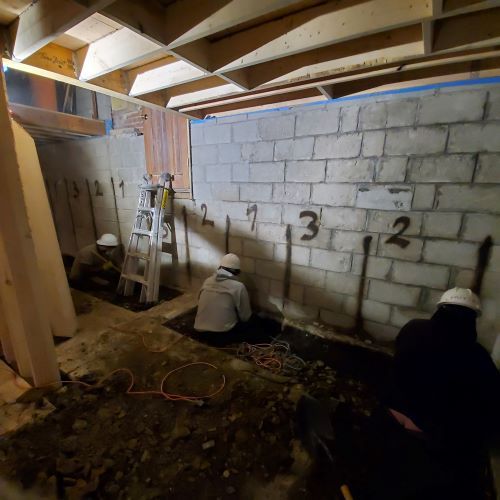
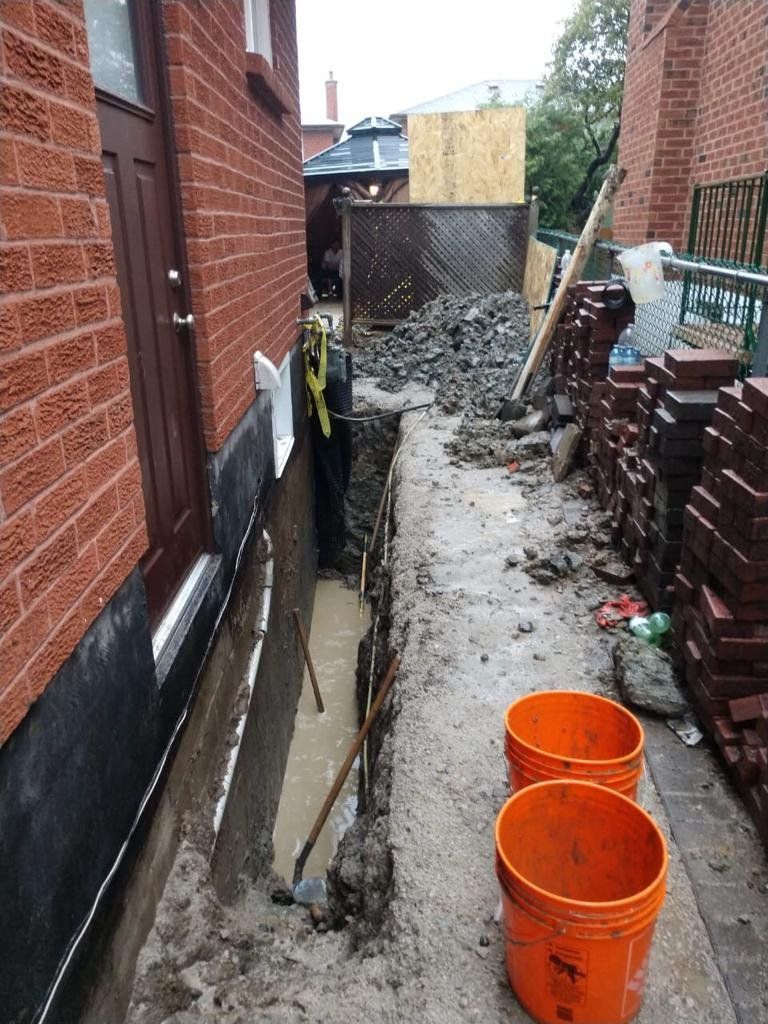
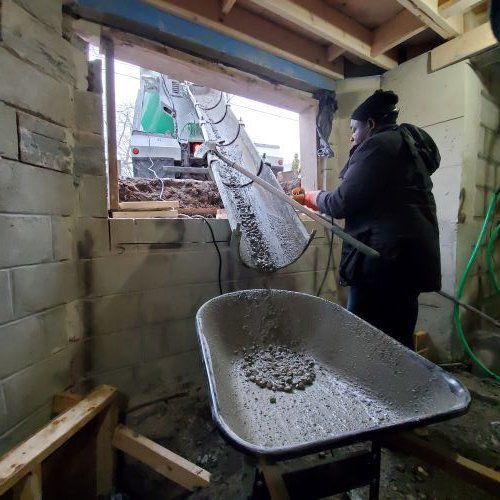
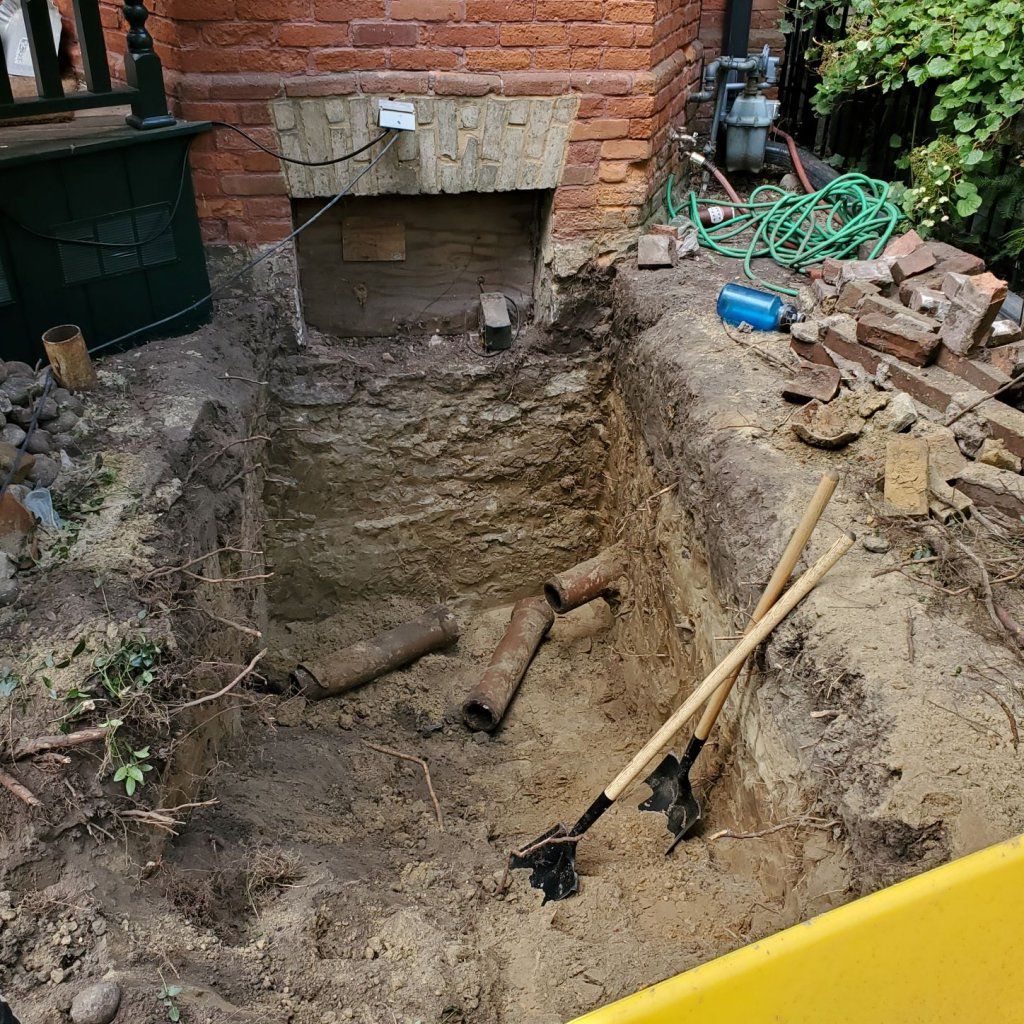

WORKING HOURS
Monday – Friday: 8:00 – 17:00 Hrs (Phone until 18:00 Hrs)
Saturday: 8:00 – 16:00 Hrs
Sunday: Closed

WE ARE HERE
432 – 720 King Street West Toronto, ON M5V 3S5
Phone: +1 416-300-8751
Email: info@budgetreno.ca














